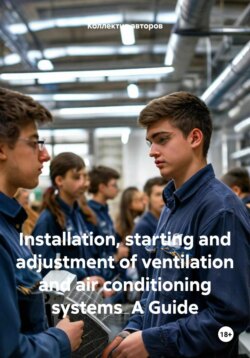Читать книгу Installation, starting and adjustment of ventilation and air conditioning systems A Guide - - Страница 23
Chapter IV. Ducts and Fittings
4.5. Flexible air ducts
ОглавлениеFlexible ducts of circular cross-section, lightweight, do not need special turns, as a result of which the duct has fewer connections, which simplifies installation. However, flexible ducts create a large aerodynamic drag, which may be excessive with an extended network, so they are often used as connecting pipes of small length. Flexible ducts are divided into:
• Flexible aluminum ducts without heat and noise insulation;
• Aluminum ducts with polymer coating without heat and noise insulation;
• Highly flexible polyvinyl chloride ducts;
• Highly flexible insulated air ducts consisting of two layers of polyvinyl chloride coated with polyamide fabric. A flexible steel wire spiral is located between the two layers.
• Semi-rigid aluminum ducts with thermal insulation;
• Flexible heat-insulated sound-absorbing air ducts. They consist of:
– Micro-perforated air duct made of high-strength metallized polymer;
– 25- 50 mm of thermal insulation layer with a density of 16 kg/m3;
– An outer coating made of aluminum seamlessly reinforced with fiber.
These ducts have excellent noise reduction performance in the low frequency range. To reduce the possible consequences of the use of mineral fibers on human health, the inner sleeve has minimal perforation, a special acoustic film is placed between the inner sleeve and the insulation layer. This reduces the probability of fiber entrainment at normal air flow speeds to almost a minimum.
Condensation formation, safety, noise, energy saving – these are the criteria that should be taken into account when choosing a material for thermal insulation of air ducts.
